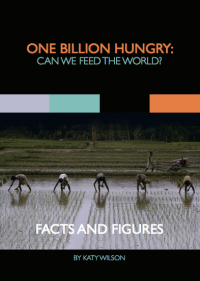 Ecological agriculture, a variety of techniques used to improve provision and utilisation of ecosystem services within a farming system, is often considered to be lower yielding than intensive forms of farming reliant on synthetic inputs such as fertilizers and pesticides. While the former is thought to be more sustainable, this sustainability is significantly reduced if more land is needed to produce similar yields to conventional farming. A new report from Greenpeace provides evidence, however, that eco-agriculture can yield better than its less environmentally-friendly counterpart in certain instances and be more profitable for small-scale farmers.
Ecological agriculture, a variety of techniques used to improve provision and utilisation of ecosystem services within a farming system, is often considered to be lower yielding than intensive forms of farming reliant on synthetic inputs such as fertilizers and pesticides. While the former is thought to be more sustainable, this sustainability is significantly reduced if more land is needed to produce similar yields to conventional farming. A new report from Greenpeace provides evidence, however, that eco-agriculture can yield better than its less environmentally-friendly counterpart in certain instances and be more profitable for small-scale farmers.
The report, Fostering Economic Resilience, is based on fieldwork from Malawi and Kenya and shows that farmers practicing either agroforestry, the use of trees that provide a natural fertilizer, or push-pull pest techniques, the use of plant species to draw crop pests away, achieve “higher incomes and yields than those practising chemical-intensive agriculture”.
Since the 1960s the use of nitrogen fertilizer has grown some 900% and is expected to grow further by 40-50% over the next four decades. And yet the problems of intensive agriculture and an overreliance on synthetic chemical inputs are well known:
- Inputs are expensive to farmers and to governments when subsidized – 10 countries in sub-Saharan Africa spend some US$1.05 billion a year on fertiliser subsidy programmes, an amount which makes up an average of 30% of their agriculture budgets.
- The continued and heavy use of chemical inputs can pose severe health risks to farmers – “the UN Environment Programme has calculated that the cost of pesticide-related illnesses in sub-Saharan Africa, for governments and those affected, could reach $90 billion during 2005-20.”
- Their manufacture is energy-intensive and contributes to climate change – “the manufacturing, transport, distribution and use of chemical fertilisers alone accounts for around 5% of global greenhouse gas emissions”.
- Synthetic inputs can damage soils and run-off into waterways leading to soil acidification, eutrophication of water bodies and biodiversity loss – “some 30-80% of Nitrogen applied to farmland as fertilizer escapes to contaminate water systems and the environment”.
Ecological agriculture, such as agroforestry, water harvesting and organic farming, on the other hand, aims to protect soil and water resources, conserve biodiversity and both adapt to and mitigate climate change.









